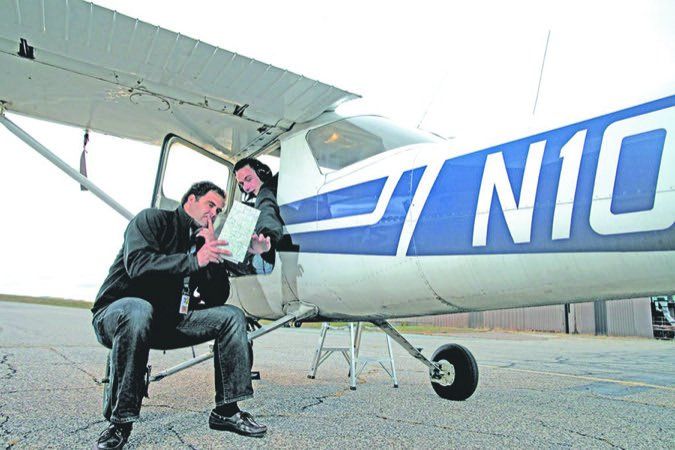When we’ve reported on accelerated flight training courses it’s been for someone who already holds a pilot certificate and is adding on a rating. But what about the newcomer to the world of aviation who is eager to become a private pilot-is there an advantage to getting the rating via a full-immersion, accelerated course? If so, what’s involved, what will it cost and how should the prospective student prepare for training?
Our, admittedly arbitrary, definition of “accelerated private pilot course” is one that is completed within a month. We surveyed a number of flight schools that offer such courses and spoke with some pilots who had completed one. Our conclusion is that, for a person who has the time, money and self-discipline to eat, sleep and breathe flying 8-12 hours a day for two or three weeks, an accelerated course is a better way to obtain a private pilot certificate than flying intermittently over the course of a few months or a year and costs about the same.
Immersion aviation training courses have been around since the Wright brothers opened up their flight school. It’s the way the military and ab initio courses around the world operate. Accelerated courses work, in part, because the student wastes very little time on review during each flight because she or he hasn’t had time to forget what was learned on the last one.
Dedicated School?
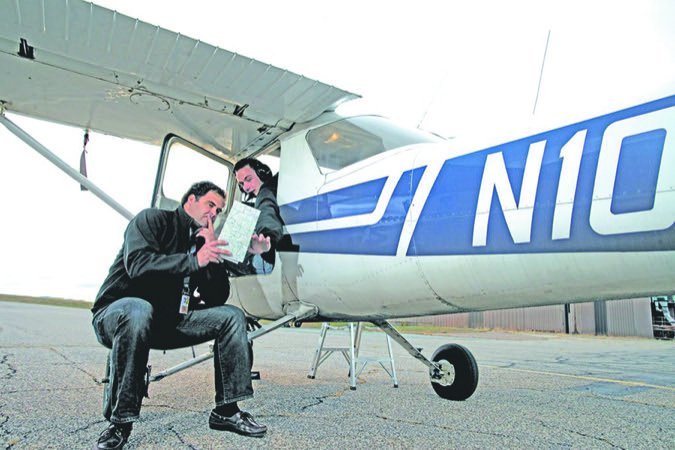
As we researched this article, we became convinced that unless the flight school had a plan in place for accelerated private pilot training as we’ll as a track record of conducting it, getting the rating inside of a month probably isn’t going to happen. Especially with the current instructor shortage, few flight schools have the resources for intensive training.
The military, ab initio and dedicated accelerated flight schools know that, impersonal as it is, there has to be an assembly line in place so that a raw student can be fed in one end, an instructor, training materials and airplane injected at the appropriate points to allow a private pilot to pop out of the other end in a matter of days.
That means going to a school that has a dedicated program in place. It also means that the customer/prospective private pilot can’t expect to call up and schedule training to begin tomorrow. There is a lead time of at least a few weeks to allow the prospective pilot to not only clear the decks and probably also go through a private pilot written exam prep course and pass the written. On top of that, we think that the prospective pilot has to have a number of talks with the flight school-and, ideally, the instructor who is assigned to her or him-to go over what will be expected of the student and let the instructor get to know the student and begin to tailor the training for the student. Finally, because there is a serious shortage of Designated Pilot Examiners, the school has to schedule the checkride for the student weeks or months in advance.
School Responsibilities
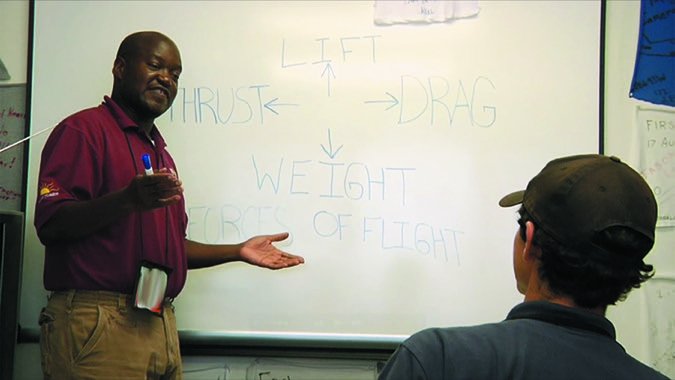
After speaking with dedicated accelerated flight training schools and students who had completed accelerated courses we came to a number of conclusions as to what a prospective pilot should expect when selecting an accelerated training facility.
The school should be able to dedicate one instructor to the student either as the only or supervising instructor for the entire course. We think that continuity of instruction is vital.
The common comment we received from pilots who had received training in various accelerated environments was that, no matter the reputation of the training organization, the quality of the instructor assigned to the student makes all of the difference in the success of the training. In our opinion, that means that the instructor and student should have an opportunity to speak a number of times before training begins to root out any personality conflicts or “this just doesn’t fit” situations before it’s necessary to change instructors in the middle of training. It is also our firm opinion that if a problem between an instructor and a student does crop up during training, the school should be in a position to change instructors within a day.
A few of the accelerated private pilot training programs will come to the student (and use the student’s airplane). For those, we think it is especially important that the student and instructor have communicated a number of times before the training starts because changing instructors is more difficult.
We think the school should dedicate one airplane to the student during the training program. While that means that the airplane may not be making as much money for the school as it might because it is sitting while the student is doing ground school, we think it helps the student to get to know an individual airplane, and its quirks.
We also think that there should not be pressure on the student and instructor to get the airplane back in time for the next student. Delays are common in aviation. If a flight, be it dual or solo, gets off to a late start, in our opinion, there should be no need to truncate that flight because another student is waiting for the airplane.
Airplanes break. Sometimes the fix takes a few minutes, sometimes it’s days. In our opinion the school should be able to have a replacement airplane of the same type, with the same or similar avionics, on the line within an hour or two.
We like flight simulators. A qualifying one can be used for credit for 2.5 hours toward the private pilot rating, and can help the student learn and retain maneuvers, especially if weather interrupts training. We think that integrating a simulator into a program is a plus.
The syllabus for the program should be provided to the student we’ll in advance. The student should easily be able to tell where he or she is as training progresses. The syllabus should have clear goals and objective completion standards for lessons.
Finally, all of the schools wecontacted said that they will help students find cost-appropriate lodging near the school.
Student responsibilities
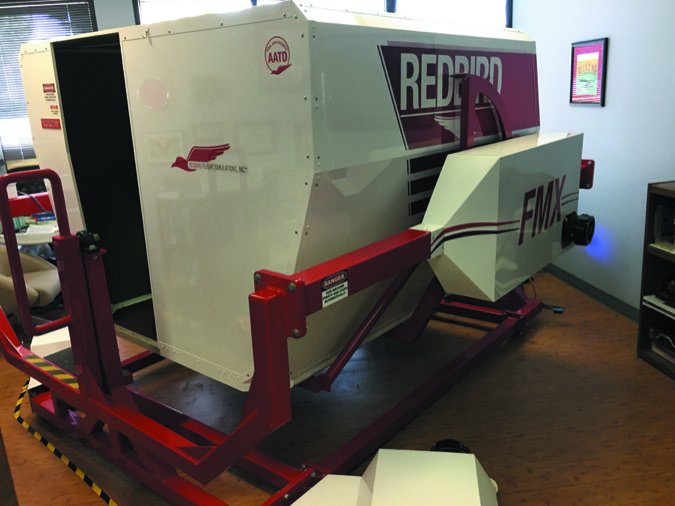
While the school has responsibilities to the student, the student has responsibilities to him or herself and, by extension, to the school and instructor. The first is that the student be able to dedicate full time to the training. When we asked schools about students who have trouble completing training within the allotted time, all said that it was almost always that the student could not get rid of distractions.
Most of the schools we spoke with require that the student have passed the private pilot written exam prior to coming for training. For example, Ocala Aviation Services (www.usflighttraining.com) requires that a customer “have taken or be prepared to take the FAA Written Knowledge test within two days of arriving at Ocala Aviation Services.” Sporty’s Pilot Academy (www.sportysacademy.com) requires that arriving students have passed the written.
According to Sporty’s Ed Radtke, they prefer that the student have taken the training for the written using Sporty’s materials as those tie in with the flight training syllabus, making the flight training go more smoothly.
Accelerated Flight & Instrument Training (www.afit-info.com) goes one step further in requiring that the student have received at least a score of 80 percent on the written. CEO Tony Montalte told us in the school’s 30 years of business they’d observed that pilot examiners gave checkrides that were up to an hour longer to applicants with test scores below 80.
The only school we spoke with that did not require the arriving student to have passed the written was Air Trek North (www.airtreknorth.com). School owner Randy Schoephoerster told us that they have found that because of the difficulty for someone coming into aviation cold to get through the materials for the written and pass it without also flying, their three-week private pilot training course includes getting the student through the written exam.
Every school required that a student have passed at least the FAA third class medical and have a current medical certificate when they arrive for training.
Cost
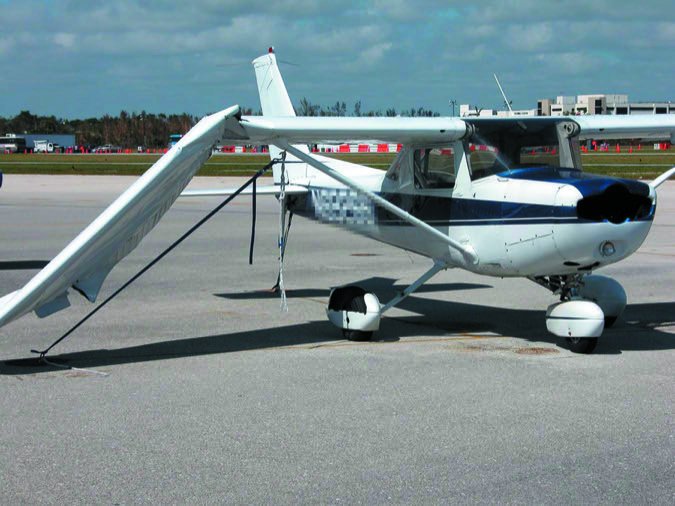
None of the schools we surveyed promised a “guaranteed” cost for its accelerated private pilot training course. We’ve seen “guaranteed” pricing for flight training and consider it bogus. The schools we spoke to all said that they realize that there are variables in the flight training process and the student and would give us either a base price or a price range. We note that training cost is significantly affected by the type of airplane used.
The lowest price we saw was at Air Trek North, which listed a base price of $6400 in a Cessna 150. Owner Randy Schoephoerster told us that younger students were more likely to get the private rating at the FAA minimum number of hours than older students and that his school had had a number of students who were ready for the checkride before reaching 40 hours.
Ocala Aviation Services quotes a base price of $10,575 for 45 hours in a Cessna 172. Ocala’s Brad Broersma said that in the 15 years the company has offered the accelerated private program, the majority of the students have completed it in two weeks, working six days a week. He also said that, even in Florida, there can be weather delays in training, so students should come prepared to be flexible.
Ed Radtke of Sporty’s Pilot Academy quoted a price range for its accelerated course in a Cessna 172, from $10,000 to $12,000. He said that prospective students should plan on a three-month lead time between first contacting Sporty’s and beginning the course. He told us that demand for accelerated courses is so high that the Academy won’t be able to take a new student until next spring.
Paying For It
No matter how you intend to pay for an accelerated training program, we cannot overemphasize our recommendation that you not pay more than $1000 up front. We’ve seen way too many schools require advance payments for half or all of the training and then vanish before the student finishes. We once thought that aviation only attracted the most honest of humans. We were long ago disabused of that notion.
Some schools require a deposit before starting training. We recognize that the school incurs some costs in getting ready for a student and a cancellation can put an unfillable hole in the schedule-possibly a significant loss.
The schools we surveyed said they will help students get financing for training. We recommend that you not use a financing organization that is connected directly with the school-stick with a reputable third party and maintain control of when the money goes to the school. Air Trek North’s Schoephoerster told us that he recommends AOPA financing because “Even if they say no, they do so gently.”
Because of the interest rate on credit cards we strongly recommend against using them for financing.
Earning The Private Certificate: What’s Involved?
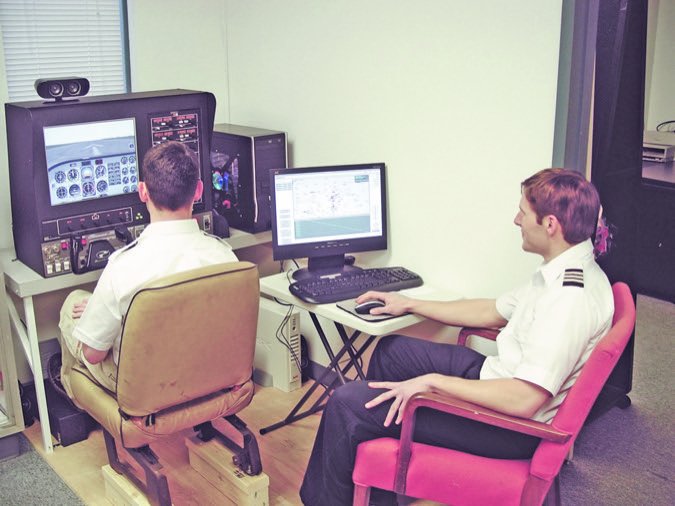
The data we’ve been able to find on private pilot training consistently show that most students are able to obtain the rating with between 60 and 70 hours of flight time. The accelerated schools we spoke with said that the majority of their students get the rating in less than a month with 40-45 hours of flight time. We’ve seen students who totally immerse themselves in a solid learning environment get the rating with under 50 hours of flight time.
As part of our survey of accelerated flight training we took a step back and looked at what a person has to master to become a private pilot-you know, to become the Pilot in Command of an aircraft carrying passengers, operating in the National Airspace System. We were reminded that the material, at first blush, appears to be a mountain of stuff.
While most of the readers of this magazine hold at least a private pilot certificate, we think it’s worth a review of what the FAA requires for the rating to remind those who hold it that what they did was pretty impressive and to let those who are considering the rating know what they are in for. The good news for those who are considering the rating and see what follows as an unclimbable mountain: We’ll say up front that it’s not and let you know a secret-those of us who obtained the private ratings are not super beings in any way, shape or form (just ask a pilot’s spouse). We’re being perfectly frank when we say: If we can do it, you can do it.
The FAA sets out the areas of aeronautical knowledge, risk management and flight proficiency required of a private pilot in FAR Part 61 and provides detailed guidance in a series of handbooks, known as the FAA-H-8083 series. Demonstration of proficiency is via a computer-graded test-commonly known as “the written”-and a practical examination with an FAA-designated examiner, which consists of two parts, a one-on-one oral exam and a demonstration of proficiency in an airplane-usually called either a flight test or checkride.
The FAA breaks down the areas of knowledge, risk management and skills to master in its Private Pilot Airman Certification Standards. The nearly 100-page document is available for free on the FAA website (www.faa.gov). Massively abbreviated, here’s what a private pilot has to know and demonstrate.
Preflight preparation: pilot and medical certification requirements, limitations and privileges; aircraft airworthiness requirements and determining if an aircraft is airworthy; obtaining and interpreting weather applicable to a flight, weather minimums and making the ongoing “go-no go” decision during flight; cross-country VFR flight including aircraft performance and loading; operating in the National Airspace System and appropriate use of aircraft systems; human factors applicable to flight.
Takeoff and landing operations: engine starting and operating; airport surface ops on towered and non-towered fields; takeoffs and landings including rejected takeoffs, go-arounds, engine failure, dealing with different runway surfaces (short and soft) and crosswinds; stabilized approaches.
Maneuvering: steep turns; ground reference maneuvers; slow flight; stall recognition, avoidance and recovery power on and power off; and basic maneuvering with reference to instruments.
Navigation: reading and interpreting aeronautical charts and symbology; pilotage and dead reckoning; use of ground-based and satellite-based navigation systems; use of radar assistance to VFR aircraft; use of transponder; selecting an alternate destination in flight; complying with airspace regulations, communications requirements and weather minimums during cross-country flight; lost procedures and night operations.
Emergency operations: mastery of emergency procedures in the aircraft POH; emergency descent; forced landing; obtaining assistance from ATC and use of emergency equipment and survival gear.
Postflight procedures: after landing checklist; appropriate taxi operations and responding to signals from persons marshalling aircraft on a ramp; parking; systems and engine shutdown; securing the aircraft; postflight inspection and documentation of aircraft discrepancies.
You can do it.
Conclusion
If you are the type of person who can take two or three weeks away from life and are willing to work hard all day, each day of those two weeks, we think an accelerated private pilot training course may be the ideal way to get the rating.

